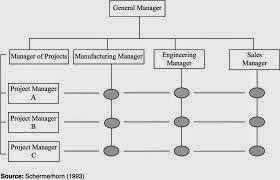International Trade Issues and Strategy of Nepal in South Asian Region
1. Strategic Outlook on South Asia
v Inter-regional trade accounts less
5% of overall trade with in south Asia Region.
v Recent World Bank studies shows
that if you actually look at the economic complementary and geographical
proximity (nearness) of the south Asian countries, they should be trading 3
times more what is the case.
v South Asia countries are trading
with more outside the south Asia compared to with won neighbors
v If fact India, Pakistan, Nepal and
Srilanka have 2.9 times more restriction on trade on the south Asian Partners compared
with rest of the world.
These
are the numbers shows that even though we have SAFTA, but still physical
barrier exist and barriers of connectivity and also digital connectivity for
potential digital economy and how small developing countries and isolated
countries can leave frog if they were digitally connected.
2. Review of Nepal Situation
¨ Nepal is policy regime has not been very effective in
improving trade competitiveness
¨ Weak infrastructure, Poor HR absence if quality
standardization of exports frequent policy reveals among other have restricted
the country in improving its international competitiveness.
¨ Still, due to global economy, these issues need to be
properly addressed. With the reference to regional and multinational agreement
(SAARC, WTO, SAPTA, SAFTA, BIMSTEC) to strive for effective and meaningful
regional trading.
Nepal
Situation
v Nepal’s trade deficit swelled 24.5 percent to Rs887.88 billion in
the first eight months of the current fiscal year due to increased imports of petroleum
products, readymade garments, aircraft spare parts and electrical goods.
v Nepal Rastra Bank’s report shows
that imports
jumped 23.8 percent to Rs.949.11 billion in the first eight months of
the current fiscal year, up from 22 percent in the same period during
the last fiscal year.
v Imports from
a.
India=22
%
b.
China
= 37.8%
c.
Other countries = 20.8%
3.
Issues and challenges
The following are the listed issues
and challenges for international trade by Nepal.
¨ High cost of production coupled with poor access to
international market.
¨ Nepal's limited exportable items such as carpet and
readymade garment that used to command over 2/3 of total overseas export have
lately lost since.
¨ Despite having strong export potentialities to some
states of India -Nepal lacks the production of commodities that can compete in
the Indian Market.
¨ Exportable performance of manufactured good is very
dismal and depressing
¨ Consumption also promoted by remittance help swelling
of import. Rising import has been blamed for the worsening external sector
condition of the country.
¨ Nepalese industrial bases have been enfolded and
squeezed.
¨ Both trade related as well as other infrastructures
remain inadequate and in poor condition.
¨ Nepal's continues to struggle with poor business doing
environment
¨ Export incentives are not giving much incentives to
export
4.
Control Strategy for Trade deficit
To control trade deficit, Nepal must
follow three important strategies as discussed below.
I.
14th periodic plan has adopted following
strategy
¨ Trade facilitation and infrastructure development
¨ Product Development
¨ Export promotion
¨ Trade diversification
¨ Service Trade Promotion
¨ Trade related capacity Development
¨ Trade information system (TIS) development
II.
Export Promotion Strategy
¨ Nepal doesn't have sufficient domestic capital
available for investment in infrastructure projects, foreign investor should be
encourage i.e. cost effective production and encouraging export
¨ PPP policy
and boost system and optimum but
sustainable use of natural resources should be facilitated for industrial
growth
¨ Assessment of export potential of the country should
be undertaken and product with competitive advantage should be selected,
developed and promoted.
¨ We are not able to reap benefit from such
opportunities. Effective implementation of BIPPA agreement with India as well
as china help the country increase its export and explore the opportunity.
¨ FI should be attracted to invest in hydropower (
PTA= Power trade Agreement )
¨ Zinc sheet, pebbles, Cardamom and juice export is
increasing to India. Nepal's organic tea and coffee is a big demand in Europe
and America. Nepal's handicraft and silver craft, Yarshagumba and other medical
herbs emphasis should be given on the processing and packaging such as to add
the value.
¨ Export promotion
abroad by conducting exhibitions and international trade fairs. International
market development should be monitored and assessed.
¨ Lack of quality certification of raw materials
necessary for Nepali industries can be cited as main problem
¨ Finding new tourism sectors.
III.
Import Substitution Strategy
¨ Promote the hydropower electricity
as well as solar power and bio-gas so as
to replace petroleum products
¨ Agro- products such as rice, corn,
vegetables, oil etc. Reduction in import of agricultural products will relax
the trade deficit to large extent.
¨ Cigarette and liquor imports should
be discouraged. Quota on gold , silver should be tightened and custom duties on
luxurious goods should be raised
¨ If ministry of physical
infrastructure and improve public transportation will reduced on the import of
private vehicles.
5. Conclusion
The
trade sector plays a highly instrumental role in attainable high and
sustainable economic growth and indisputable. However, Nepal's policy regime
has not been very effective in improving trade competitiveness and not reducing
alarming trade deficit with India and other nation.


Comments